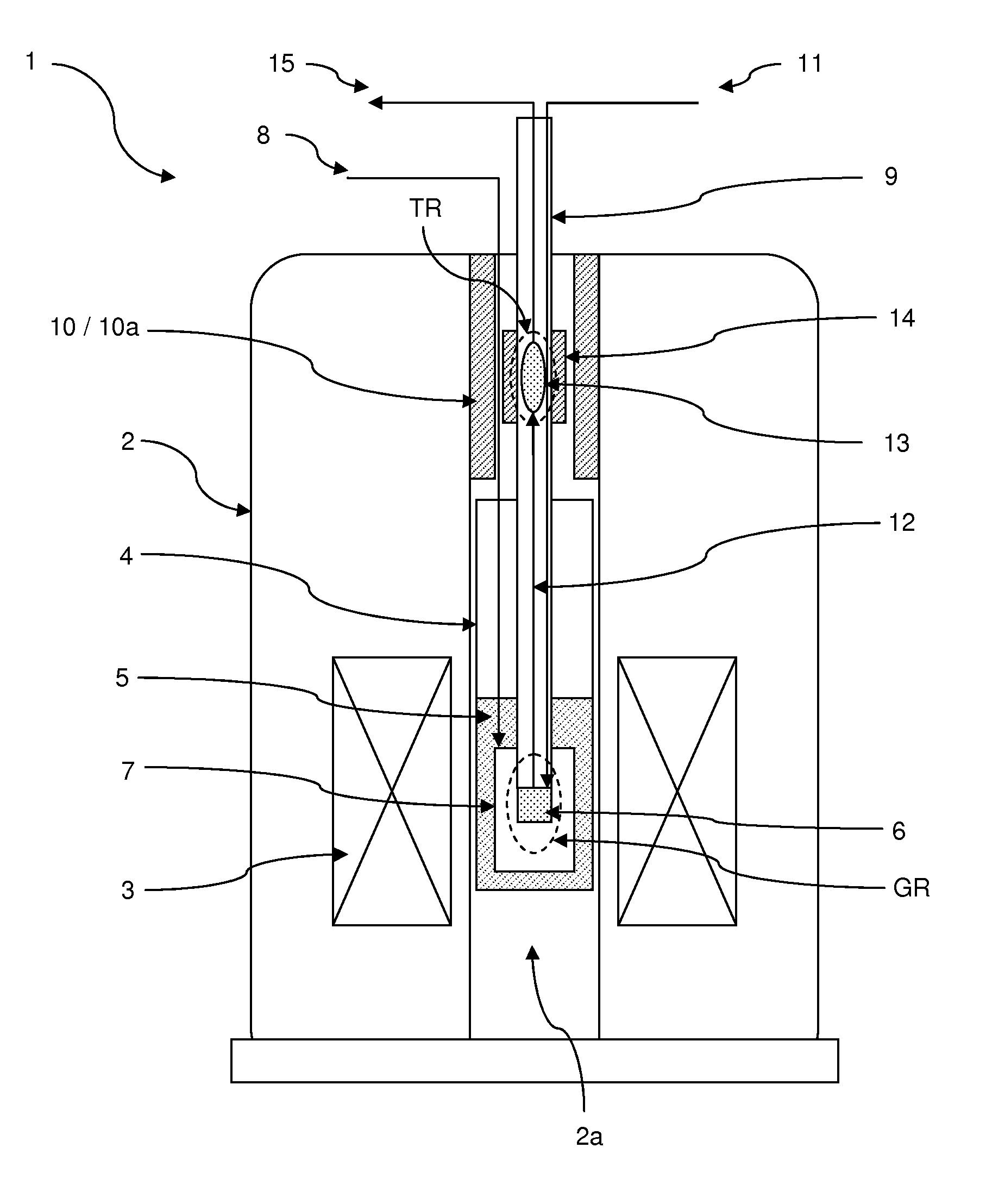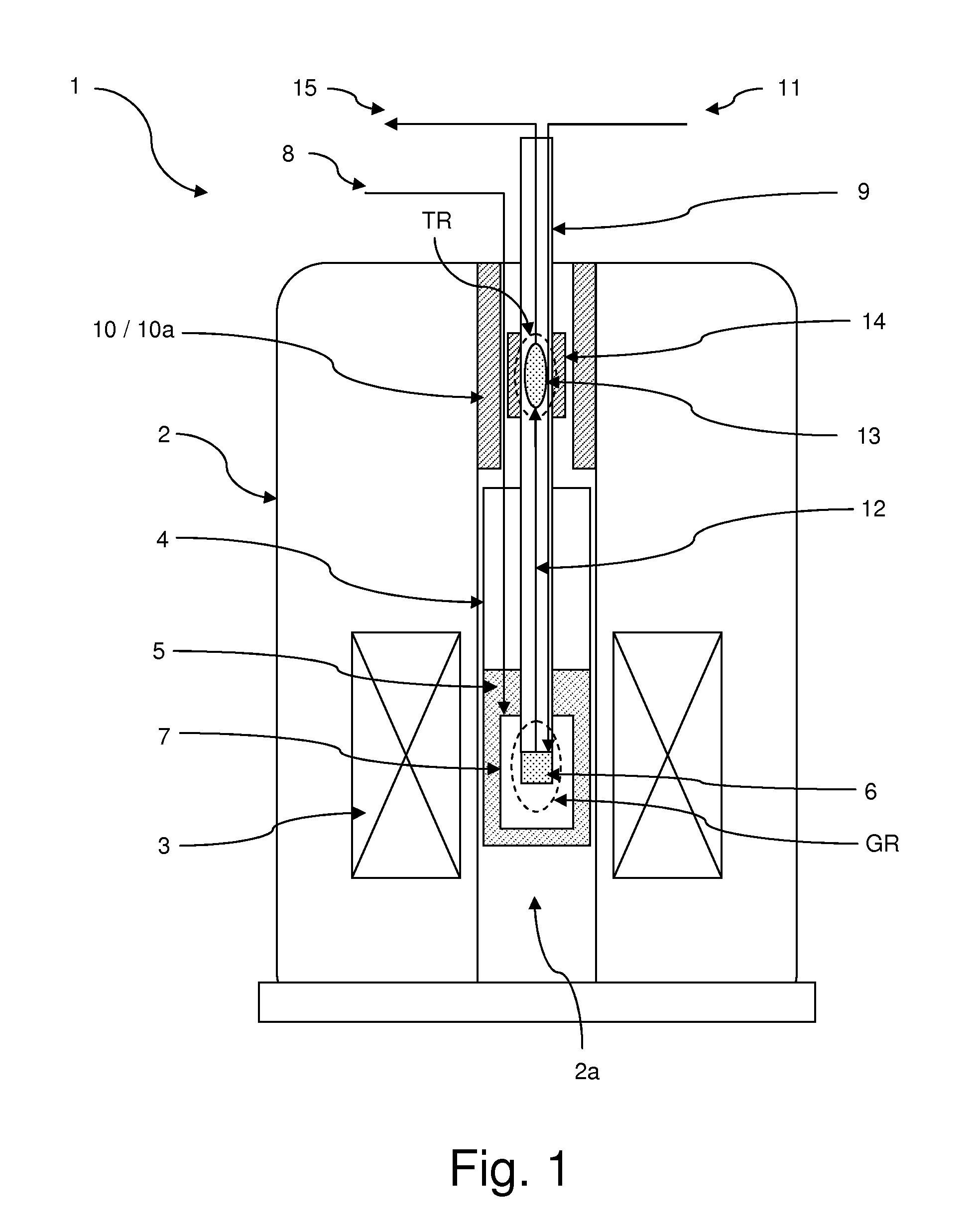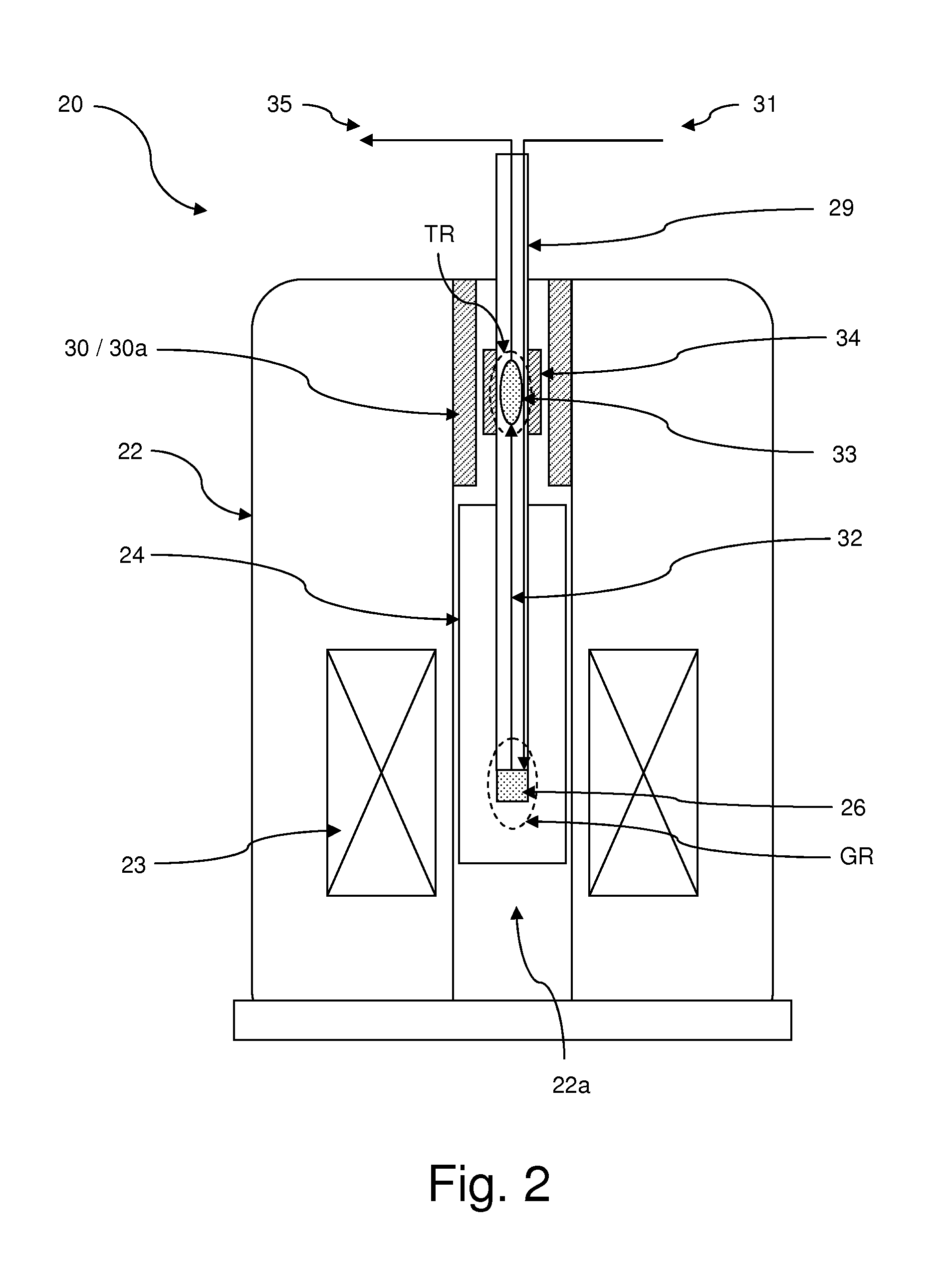Method for hyperpolarization transfer in the liquid state
a liquid state and hyperpolarization technology, applied in the field of hyperpol, can solve the problems of long polarization time of hyperpolarization by dnp, limited nmr techniques, and serious technical challenges in generating sufficiently strong, so as to avoid or reduce the delay for further use, good access to the polarization transfer region
- Summary
- Abstract
- Description
- Claims
- Application Information
AI Technical Summary
Benefits of technology
Problems solved by technology
Method used
Image
Examples
Embodiment Construction
[0062]FIGS. 1 through 3 illustrate by way of example embodiments of an inventive apparatus, suitable for performing an inventive method for producing a hyperpolarized sample.
[0063]An inventive apparatus makes use of two regions of different static magnetic field. One moderately homogeneous high field region (or polarization generation region) is used for hyperpolarization such as for example by Brute Force hyperpolarization or DNP. This region comprises means for the generation of low or very low temperatures and, in the latter case, for the supply of microwave energy. A low field, moderately homogeneous region (or polarization transfer region) is used for hyperpolarization transfer in the liquid phase and comprises means for performing Cross Polarization, typically including RF coils. In the illustrated examples, protons are used as short T1 nuclei, and 13C are used as long T1 nuclei, but other elements as described above may be worked with, too.
[0064]The apparatus 1 illustrated in...
PUM
 Login to View More
Login to View More Abstract
Description
Claims
Application Information
 Login to View More
Login to View More - R&D
- Intellectual Property
- Life Sciences
- Materials
- Tech Scout
- Unparalleled Data Quality
- Higher Quality Content
- 60% Fewer Hallucinations
Browse by: Latest US Patents, China's latest patents, Technical Efficacy Thesaurus, Application Domain, Technology Topic, Popular Technical Reports.
© 2025 PatSnap. All rights reserved.Legal|Privacy policy|Modern Slavery Act Transparency Statement|Sitemap|About US| Contact US: help@patsnap.com



